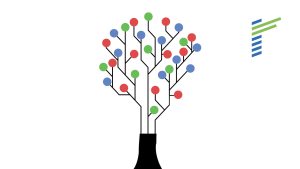BACKGROUND
Maintaining competitiveness mandates companies to continually monitor and enhance their operations. An essential tool for measuring manufacturing efficiency is Overall Equipment Effectiveness (OEE), which provides a comprehensive metric for assessing the performance of machines or production lines relative to their maximum potential. By monitoring OEE, manufacturers can uncover opportunities for improvement, minimize downtime, and boost productivity.
This case study offers valuable insights into the benefits of establishing a robust management control system in a production environment, which serves as a solid foundation for effectively utilising incremental and sustainable OEE optimization in a large furniture factory. The study also outlines the process used to optimise the manufacturing operations.
THE CHALLENGE
The Client operates one of the largest furniture manufacturers in Southeast Asia with more than 3,000 employees. Its main market is the US export market.
The CFO had recognized the need for a significant overhaul of the factory operations with the aim to increase its productivity and efficiency. To help achieve this, he asked to conduct an analysis of the company’s operations and to help the company transition from a founder-centric management style to a system-centric approach to achieve its objectives.
ANALYSIS
The ambition to improve operating systems at the company became the biggest driver for the project. Renoir partnered in the transformation program by improving operational processes and management control systems for the following areas: Production, Production Planning, and Material Management.
As well as identifying the need for a robust management system, other areas of improvement were identified including OEE, labour productivity performance and deadstock identification and removal.
PROJECT APPROACH
To lead multifunctional teams, a task force was created with guidance and coaching from full-time consultants. The teams mapped all key processes, identified opportunities for improvement, determined root causes of inefficiency, prioritized those issues, and developed action plans to implement permanent solutions. Mechanisms were also established to measure the progress and success of the initiatives.
Despite challenges related to product customizations, the teams developed a robust management control system that focused on weekly performance management, utilizing a daily/weekly operating report, daily team huddles, and volume growth strategies for the focus area within the scope.
IMPLEMENTATION
The implementation of a holistic management control system for production and production planning, including daily and weekly operating reports, daily huddle meetings focusing on OEE, weekly department performance reviews, and bi-weekly management performance reviews, helped to improve the plant’s productivity and on-time delivery rate.
During the initiative, the existing culture was the strongest barrier to the project. But with constant support, guiding and coaching from management, the team successfully designed and implemented a robust management control system. By utilising Renoir’s Focus Process®, the team identified major gaps in operations: a lack of performance management, no KPIs and, most importantly, a lack of data driven analysis on which to base informed decisions.
“ Renoir’s approach helped us define our real potential and they supported us in establishing the foundation of our system. The solution they implemented was tailored to our needs. The whole team has successfully delivered the project’s objectives. ”
CFO
The scope was to reduce direct labour by increasing plant productivity. However, labour availability was only at 40% and order completion for the year was low. Rather than reducing headcount, however, the decision was made to increase labour availability instead.
The use of a new productivity dashboard enabled visibility and measurement of performance, as well as the development of insights to address variances to targets.
Late delivery to customers was also an issue. A crisis team was formed to track every single late order and develop actions to mitigate for improving the on-time delivery rate.
Before any changes or improvements were made, the goal for the entire factory was to reach a certain level of production output each month. However, this target did not consider the current way of calculating costs, which meant that it was not clear how much money was being spent on direct labour or how many steps or processes were required to produce each item. Essentially, the target was based solely on output quantity rather than the actual cost of production.
A daily/weekly/monthly productivity dashboard was designed and implemented to allow visibility to measure performance and develop actions for variances to targets. Reasons for downtime were agreed and logged daily to understand the biggest contributors to machine downtime. Actions were created to mitigate downtime risk, and Kaizen events planned to measure the impact of the improvements.
This enabled the management to help focus on the strategy to grow volumes and, to focus on profitable products. Compliance audits were installed to support and foster the culture of continuous improvement.
RESULTS
USD 873k
Reduction in headcount
USD 500k
Deadstock identification value
+10%
BDP Productivity increase
+4.2%
YTD Productivity increase
+10%
Overall OEE improvement
CONCLUSION
The project team leveraged the skills and experience of management by helping them understand performance data and make informed decisions based on analysis. The result was a positive impact on overall plant performance and the establishment of a culture of continuous improvement.
The company’s successful transformation from a founder-centric to a system-centric management style was made possible through the Client’s collaborative effort, its task force and Renoir’s expertise and experience.
The company’s future-focused and optimistic approach, combined with a commitment to continuous improvement, will undoubtedly lead to continued success in the future.










